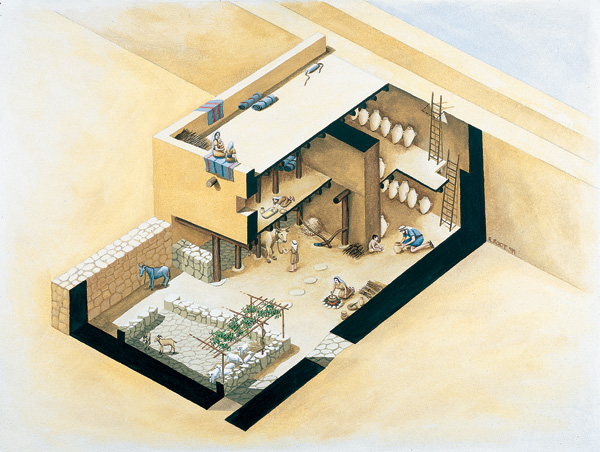Image Details

Courtesy of the Madaba Plains Project excavations at Tall al-‘Umayri, Jordan, Artist: Rhonda Root ©2001
As shown in the reconstruction, the ground floor was used primarily for work and as storage for animals and dry goods. The family—which likely included up to three generations—lived, ate, entertained and slept upstairs.
The pillared house represents a departure from the earlier Canaanite courtyard house and thus provides further evidence that the Israelites did not originate from the lowland Canaanite cities of the Late Bronze Age. In fact, the pillared-house type has been discovered at Transjordanian sites like Tall al-‘Umayri, indicating that this floor plan had broad appeal in the highlands on both sides of the Jordan and may be evidence of a common origin.
